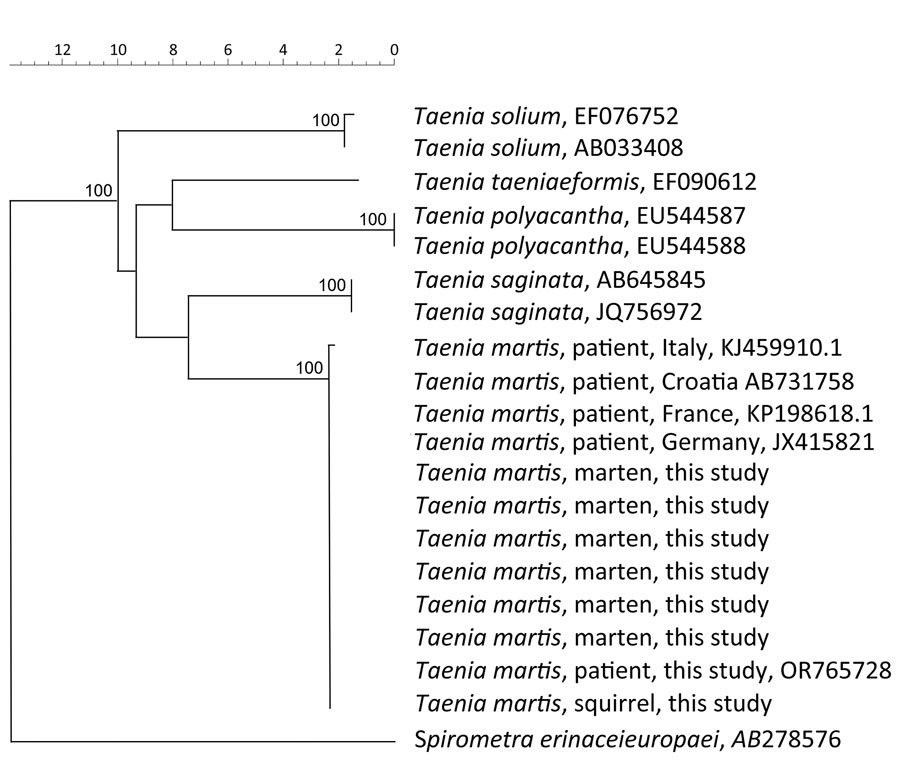Volume 30, Number 3—March 2024
Dispatch
Taenia martis Neurocysticercosis-Like Lesion in Child, Associated with Local Source, the Netherlands
Figure 2

Figure 2. Phylogenetic analysis of the partial CO1 gene of Taenia martis tapeworm samples from a patient, martens, and a squirrel in the Netherlands and reference sequences. GenBank accession numbers are shown when available. The tree is based on multiple alignment with Jukes and Cantor correction and neighbor-joining cluster analysis. Branch quality was determined by bootstrap analysis with 10,000 simulations. Reference sequences were from patients from Italy (GenBank accession no. KJ459910.1), Croatia (accession no. AB731758), France (accession no. KP198618.1), and Germany (accession no. JX415821). Moreover, T. saginata (accession nos. AB645845 and JQ756972), T. solium (accession nos. EF0767752 and AB033408), T. polyacantha (accession nos. EU544587 and EU544588), and T. taeniaeformis (accession no. EF090612) were included in the phylogenetic analysis. The cestode Spirometra erinaceieuropaei (accession no. AB278576) was included as outgroup. Scale bar indicates nucleotide substitutions/site.
1These first authors contributed equally to this article.